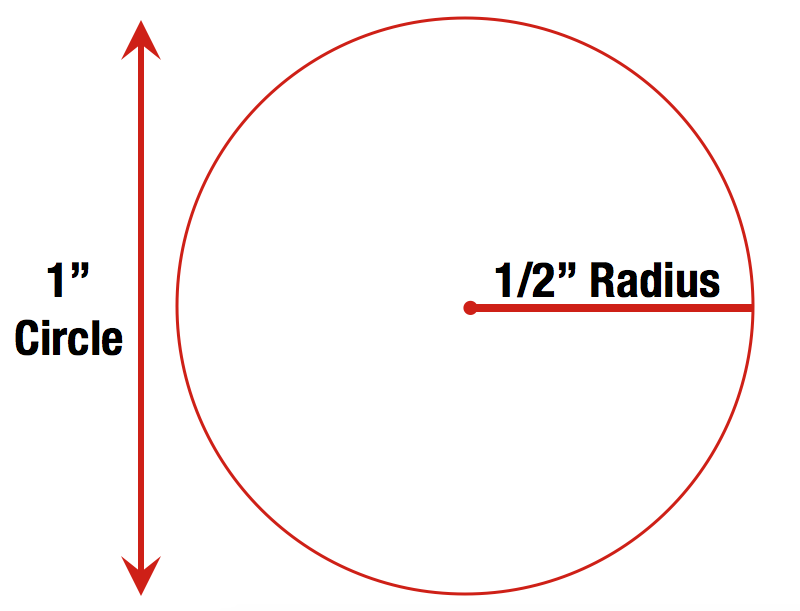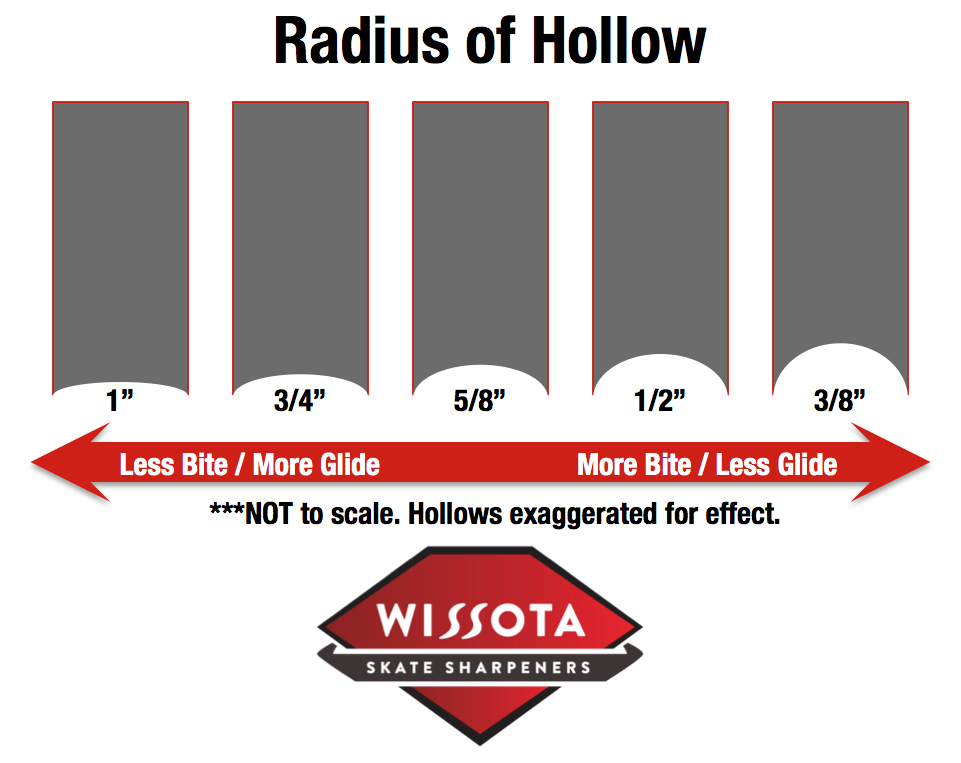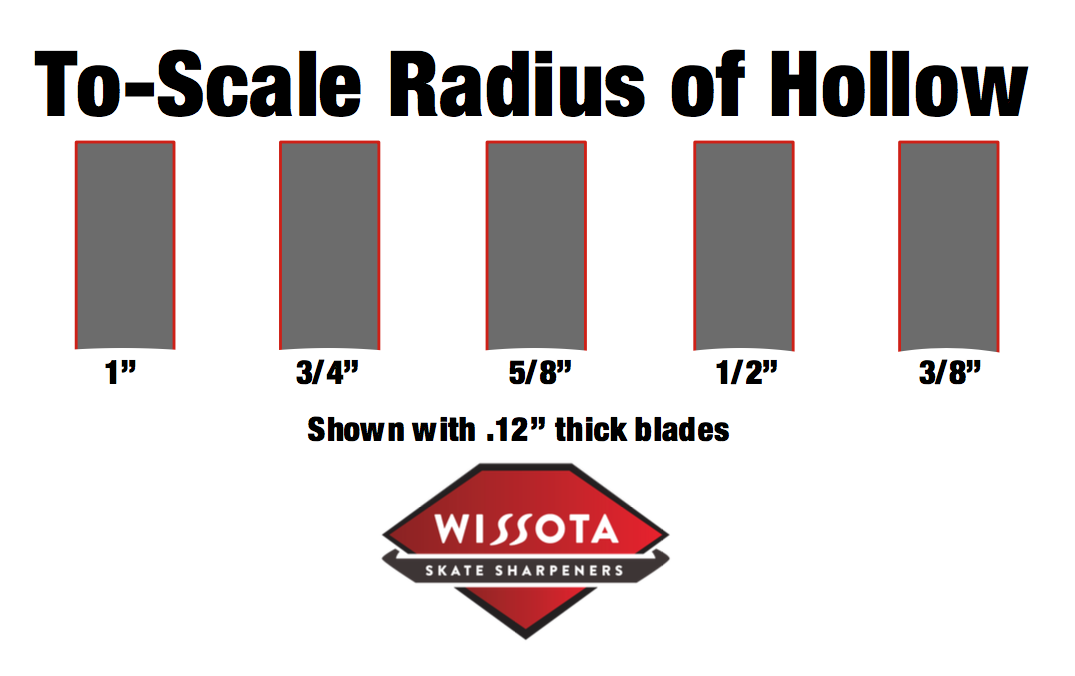Skate Sharpening 101: Radius
 The “Radius” of your skate blades can be described as the hollow that is ground into the bottom of your blades during sharpening that gives you your pronounced inside and outside edges. From grade school math you may remember that a 2″ circle will have a 1″ radius, a 1″ circle will have a 1/2″ radius, a 3/4″ circle will have a 3/8″ radius, etc…
The “Radius” of your skate blades can be described as the hollow that is ground into the bottom of your blades during sharpening that gives you your pronounced inside and outside edges. From grade school math you may remember that a 2″ circle will have a 1″ radius, a 1″ circle will have a 1/2″ radius, a 3/4″ circle will have a 3/8″ radius, etc…
The diamond dresser tool on your Wissota 911 Machine will dress (shape) the face of your grinding wheel to the curvature shape of any radii between 1/4” and 1 1/4”.
The radius of the grinding wheel is then transferred to the skate blade by grinding (sharpening).
What Radius Is Best?
In the end, there is no “right” or “wrong” radius, it all comes down to what is most comfortable for you and your skating style.To begin, let’s take a look at what different radii look like on the bottom of your skate blade.

Again, please note that the figures shown above are NOT to scale. The hollow on the bottom of your blade is actually much less pronounced. To give you a reference, here is a to-scale figure to show you what the radii actually look like.

A smaller radius will give you more bite into the ice for tighter turns and quicker acceleration, but at the same time because your edges are digging deeper into the ice which causes greater friction, your glide and speed will suffer (Also a more pronounced radius will be more fragile and less durable).
A larger radius therefore gives you greater glide and speed (speed skater’s blades are completely flat!) causing less fatigue, but less bite for maneuverability, so choose which advantages are more important for you and your skating style.
Variables to Consider
The main variable to consider when first picking a radius to try is weight. As a general rule, the heavier the skater, the larger the radius needed. An extremely light skater can tolerate a very small radius (producing a deep hollow with lots of edge) because they do not have much weight to bear on the ice.
A heavy skater trying to skate on a small radius (too much edge) will bite into the ice so hard that they will have trouble stopping without chatter or going over the top of their skates. Another disadvantage is they will also lose glide to excess friction and be working harder to skate full speed. On the other hand, they will be able to hold a very tight turn! Please note that beginner level skaters can learn most skills (particularly the hockey stop) easier by grinding their skates with a very large radius. As they progress the radii is decreased back to a normal level.
A “general purpose” chart for radius by weight is as follows:
| Very Light | 3/8″ |
|---|---|
| Light | 1/2″ |
| Average | 5/8″ |
| Heavy | 3/4″ |
| Goalie | 1 – 1 1/4″ |
Another variable to consider is ice temperature. Most rink managers shoot for an ice temperature of approximately 25 degrees Fahrenheit. A temperature of 17 to 23 degrees is considered “hard hockey ice,” 25 to 26 degrees is considered good figure skate ice. Slightly smaller radius may be used on colder/harder ice and vice versa.
Questions?
Give us a call during our business hours at (952) 417-6611, or send us an email at sales@wissota.com and we’ll get back to you ASAP.





